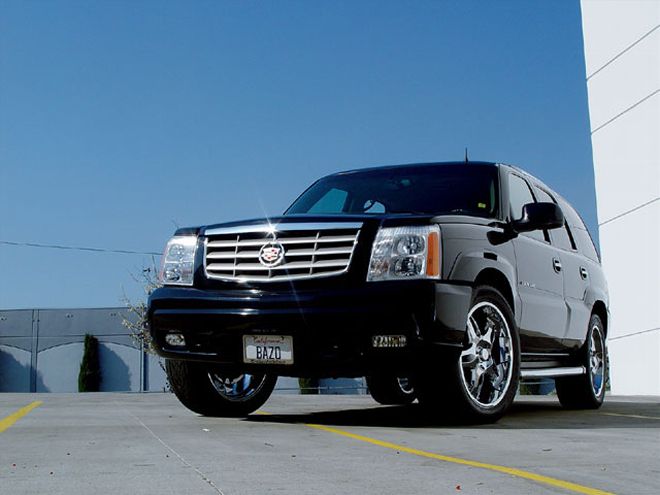
| 22s
Plus-sizing your truck's wheel/tire combo is one of the easiest ways to achieve improved performance and step up the appearance of your vehicle. There are two distinct performance reasons to plus-size your rolling stock. One would be the wider tread width (section width) of the new tire, which gives you a larger contact patch, in turn, putting more rubber on the road and providing more traction. Second, as the sidewall (aspect ratio) gets smaller, it becomes more rigid, producing less flex, which again aids in traction when cornering. Add these two parameters together and you will have better lateral stability and increased steering response versus your old rolling stock. In our market, it's not always about performance, but it's about the cool factor. Right now, bigger wheels equals a cooler ride. If it wasn't all about just cool, we really don't think you would see a set of 26s mounted on a HUMMER H2. But, stuff happens, right? So, for now, we are stuck talking about how big we roll, and rollin' big means at least 24s.
We took a trip to MKW wheels in City of Industry, California, to shoot some examples of what a truck looks like with different wheel diameters but the same tire outside diameter (od), otherwise known as plus-sizing. Maintaining the OEM tire diameter is crucial to preserving the speedometer reading and final drive ratio of the truck, which keeps the engine operating in the proper powerband. Keeping the engine running in the powerband that the manufacturer intended will not only improve fuel economy but also decrease wear and tear on the drivetrain.
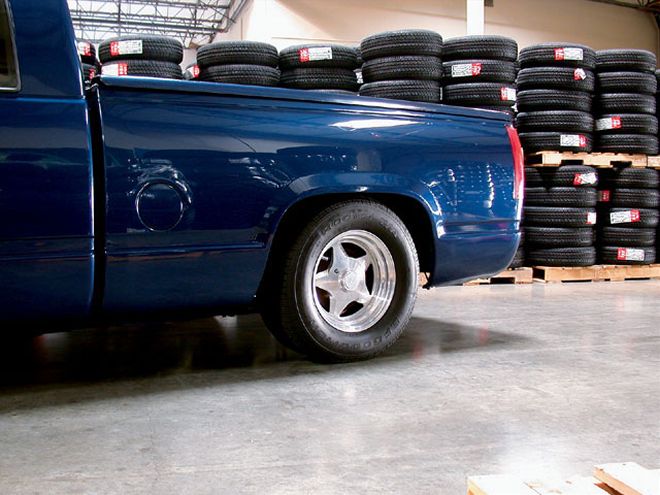
| 15s
The cool people at MKW allowed us to mount four different wheel and tire configurations in the most popular sizes available, including 18s, 20s, and 22s. The kind folks at Kumho Tires provided us with necessary rubber needed to complete this story. We used our in-house '90 Chevrolet that already runs a huge set of 15-inchers-that's right, we said 15s. Then, we moved over to an Escalade and mounted up 22-, 23-, 24-, and 26-inch wheels. Keeping with the whole plus-sizing theory, all these wheels feature as close to stock as possible overall tire diameters. Obviously, if your truck is stuffed to the ground, you might need to shrink the aspect ratio of the tire to fit the combo on your specific ride, but we are talking about direct bolt-on wheels right now and not the kind that tuck lugnuts. This is not the story to talk about wheelwells and the like for more clearance, so we will leave that for a later issue.
Definition of TermsSection Width: The measure of the tire's width at its widest point. With the tire mounted to the suggested rim, and at maximum air pressure, the sidewall of the tire will bulge slightly passed the tread width. The distance between the two bulging sidewalls is known as section width.
Aspect Ratio: This figure refers to sidewall height. The number that indicates the aspect ratio is given in a percentage. The percentage is a portion of the section width. For example, a 305/45R22's sidewall height is 45 percent of 305 millimeters.
Carcass Construction: Either a radial or belted bias-ply construction.
Rim Diameter: The diameter of the hole in the tire, which dictates the rim diameter the tire was designed to mount to.
Load Index: This figure is used to reference the load index chart and dictates the maximum load the tire was designed to carry, at maximum pressure.
Speed Rating: This figure references the maximum tire speed. For example, a 305/45R22 118V has a max speed value of 149 mph.
Here is the lineup of new rolling stock, minus the old-school 15s. The increased wheel diameter and shorter tire aspect ratio not only makes the setup look cool but will also improve handling. There really won't be any truck performance issues associated with plus-sizing, until the combo starts to weigh more than your stock setup. Once that happens, start looking for a brake upgrade to compensate for the additional weight.
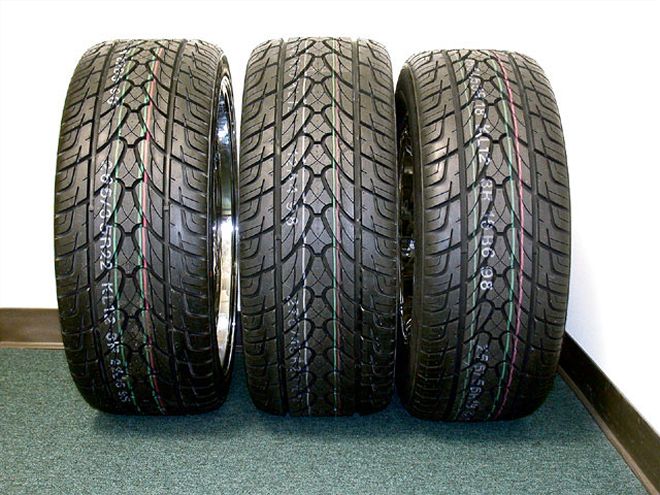
| As you can see, the outside diameter of the tires is pretty close to being the same, except for the 18-inch setup (far right). At the time we took these photos, we didn't have a tire with the proper specs to match the rest of our lineup. Be aware that there might not always be exactly what you want, so do a little homework before going to the tire store.
Carry the Load One thing you might want to keep in the back of your mind when you order wheels and tires for your truck is the load rating of the tires and wheels. Make sure whatever you chose for your ride can carry its weight. Where do I find that information, you ask? You can get it off all the tire manufacturers' websites, and just look under the load rating area. While writing this article, we did some checking and found out a few things. First, most trucks we talk about, such as the Silverado and the F-150, tip the scales around 4,700 to 5,000 pounds, while the Escalade and Expedition SUVs weigh about 5,500. Second, most tires will have a load rating high enough to hold the trucks, until you get into a thinner, 30-series tire. It's also a good idea to double-check that the wheels you order are load rated for your vehicle. As a general rule of thumb, forged wheels have a higher load rating than cast pieces, and this is important for heavier trucks like crew cab dualies or 3/4-ton trucks with heavy diesel powerplants under the hood.
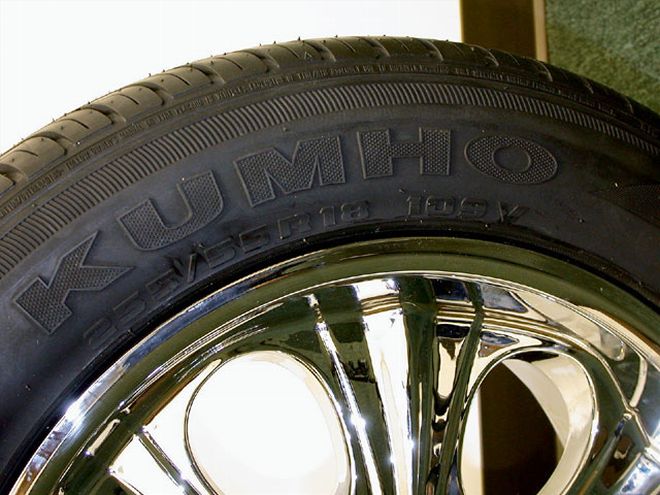
| truck Wheels And Tires Plus Sizing kumho Tire
How to Read a Sidewall P-Metric (example 1) P215/65R15 95S
P = Passenger Car
215 = Section width measured in millimeters
65 = Aspect Ratio, which means the sidewall height is 65 percent of the section width
R = Radial Carcass Construction
15 = Rim Diameter
95 = Load Index
S = Speed Rating
 | 22s
Plus-sizing your truck's wheel/tire combo is one of the easiest ways to achieve improved performance and step up the appearance of your vehicle. There are two distinct performance reasons to plus-size your rolling stock. One would be the wider tread width (section width) of the new tire, which gives you a larger contact patch, in turn, putting more rubber on the road and providing more traction. Second, as the sidewall (aspect ratio) gets smaller, it becomes more rigid, producing less flex, which again aids in traction when cornering. Add these two parameters together and you will have better lateral stability and increased steering response versus your old rolling stock. In our market, it's not always about performance, but it's about the cool factor. Right now, bigger wheels equals a cooler ride. If it wasn't all about just cool, we really don't think you would see a set of 26s mounted on a HUMMER H2. But, stuff happens, right? So, for now, we are stuck talking about how big we roll, and rollin' big means at least 24s.
| 22s
Plus-sizing your truck's wheel/tire combo is one of the easiest ways to achieve improved performance and step up the appearance of your vehicle. There are two distinct performance reasons to plus-size your rolling stock. One would be the wider tread width (section width) of the new tire, which gives you a larger contact patch, in turn, putting more rubber on the road and providing more traction. Second, as the sidewall (aspect ratio) gets smaller, it becomes more rigid, producing less flex, which again aids in traction when cornering. Add these two parameters together and you will have better lateral stability and increased steering response versus your old rolling stock. In our market, it's not always about performance, but it's about the cool factor. Right now, bigger wheels equals a cooler ride. If it wasn't all about just cool, we really don't think you would see a set of 26s mounted on a HUMMER H2. But, stuff happens, right? So, for now, we are stuck talking about how big we roll, and rollin' big means at least 24s.
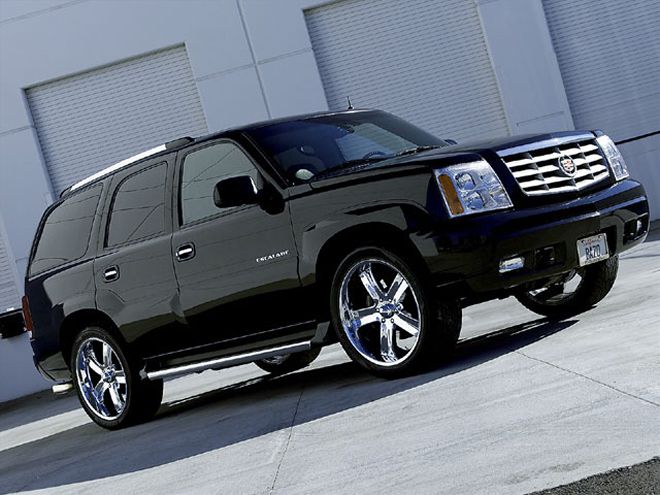
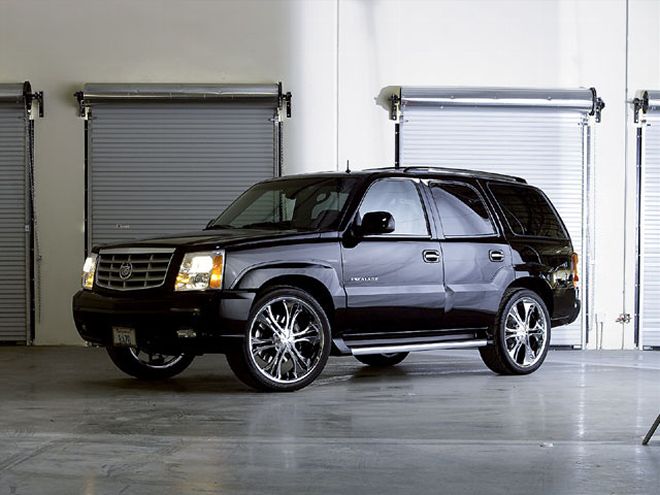
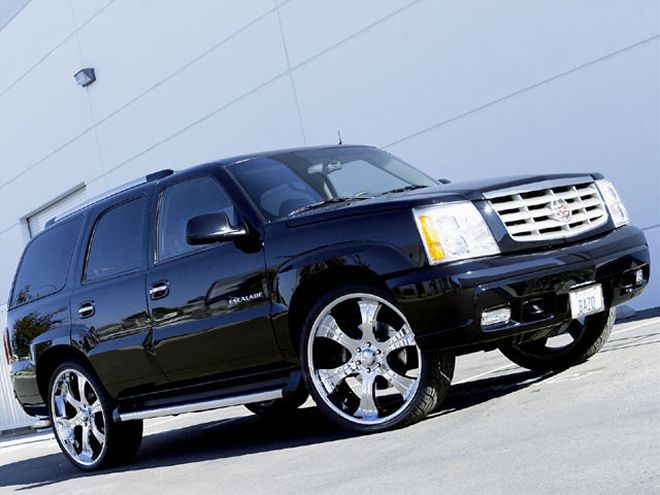
 | 15s
The cool people at MKW allowed us to mount four different wheel and tire configurations in the most popular sizes available, including 18s, 20s, and 22s. The kind folks at Kumho Tires provided us with necessary rubber needed to complete this story. We used our in-house '90 Chevrolet that already runs a huge set of 15-inchers-that's right, we said 15s. Then, we moved over to an Escalade and mounted up 22-, 23-, 24-, and 26-inch wheels. Keeping with the whole plus-sizing theory, all these wheels feature as close to stock as possible overall tire diameters. Obviously, if your truck is stuffed to the ground, you might need to shrink the aspect ratio of the tire to fit the combo on your specific ride, but we are talking about direct bolt-on wheels right now and not the kind that tuck lugnuts. This is not the story to talk about wheelwells and the like for more clearance, so we will leave that for a later issue.
| 15s
The cool people at MKW allowed us to mount four different wheel and tire configurations in the most popular sizes available, including 18s, 20s, and 22s. The kind folks at Kumho Tires provided us with necessary rubber needed to complete this story. We used our in-house '90 Chevrolet that already runs a huge set of 15-inchers-that's right, we said 15s. Then, we moved over to an Escalade and mounted up 22-, 23-, 24-, and 26-inch wheels. Keeping with the whole plus-sizing theory, all these wheels feature as close to stock as possible overall tire diameters. Obviously, if your truck is stuffed to the ground, you might need to shrink the aspect ratio of the tire to fit the combo on your specific ride, but we are talking about direct bolt-on wheels right now and not the kind that tuck lugnuts. This is not the story to talk about wheelwells and the like for more clearance, so we will leave that for a later issue.
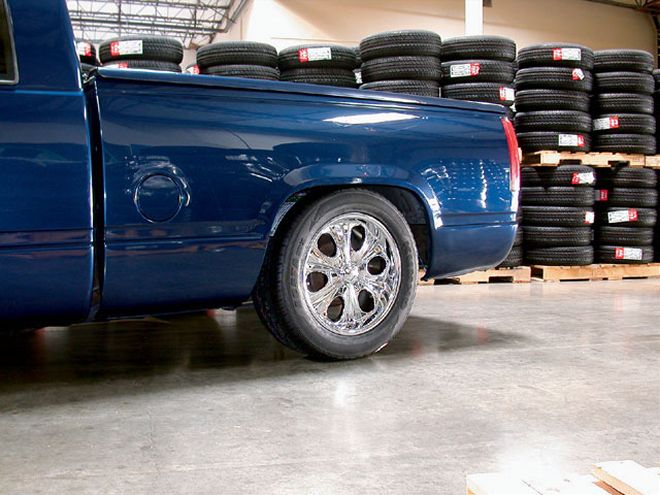
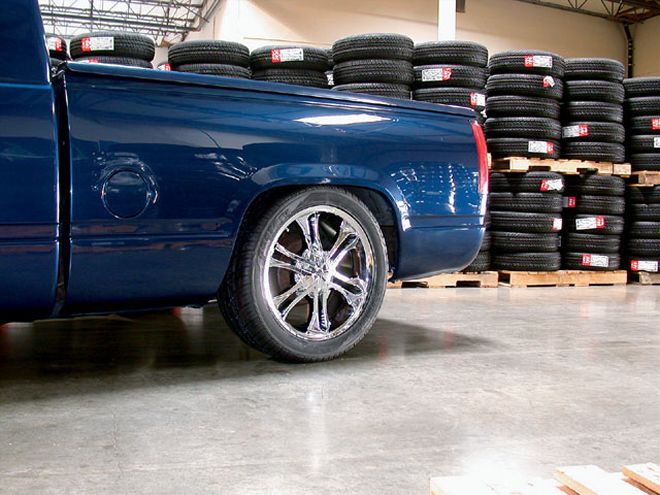
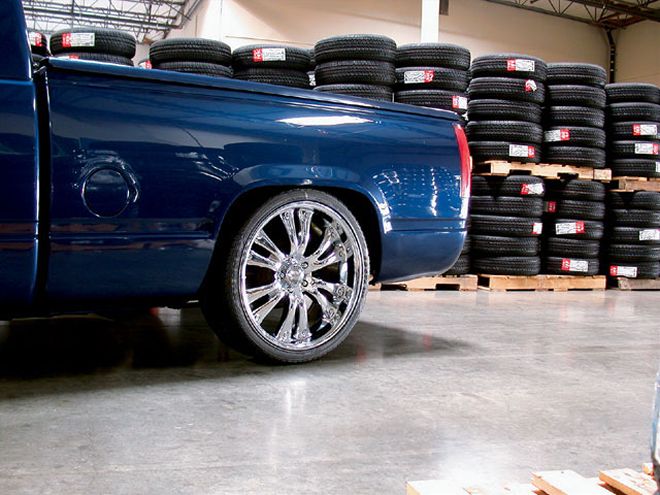
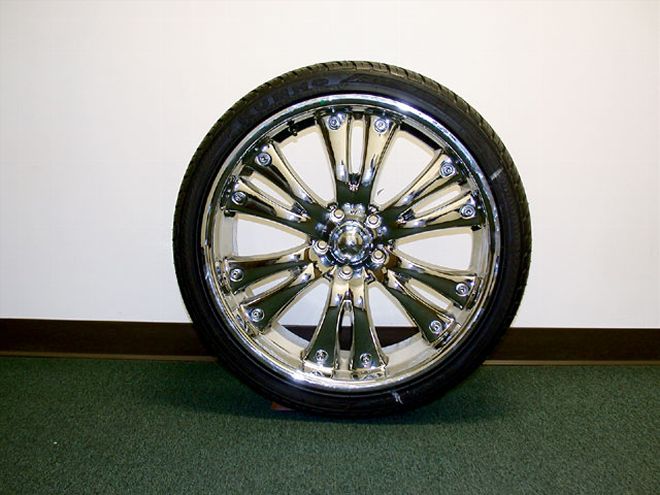
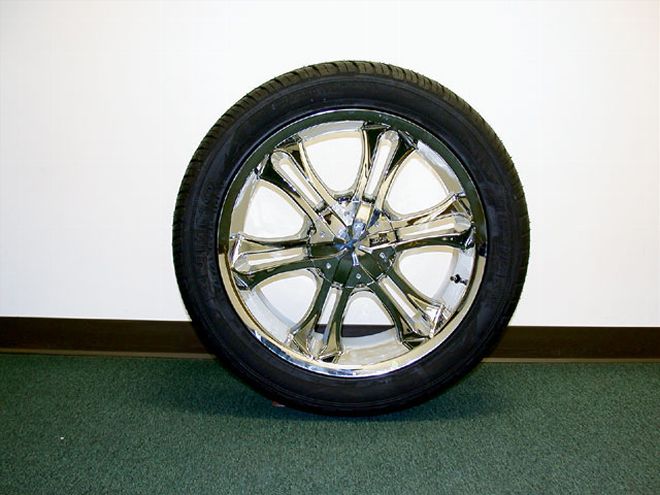
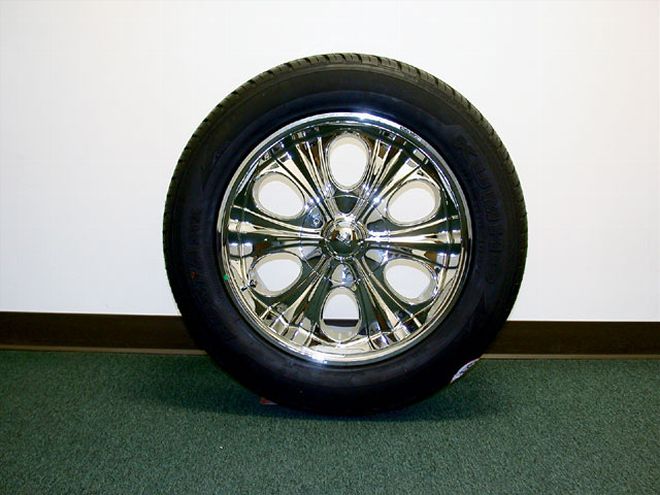
 | As you can see, the outside diameter of the tires is pretty close to being the same, except for the 18-inch setup (far right). At the time we took these photos, we didn't have a tire with the proper specs to match the rest of our lineup. Be aware that there might not always be exactly what you want, so do a little homework before going to the tire store.
Carry the Load
| As you can see, the outside diameter of the tires is pretty close to being the same, except for the 18-inch setup (far right). At the time we took these photos, we didn't have a tire with the proper specs to match the rest of our lineup. Be aware that there might not always be exactly what you want, so do a little homework before going to the tire store.
Carry the Load  | truck Wheels And Tires Plus Sizing kumho Tire
How to Read a Sidewall
| truck Wheels And Tires Plus Sizing kumho Tire
How to Read a Sidewall